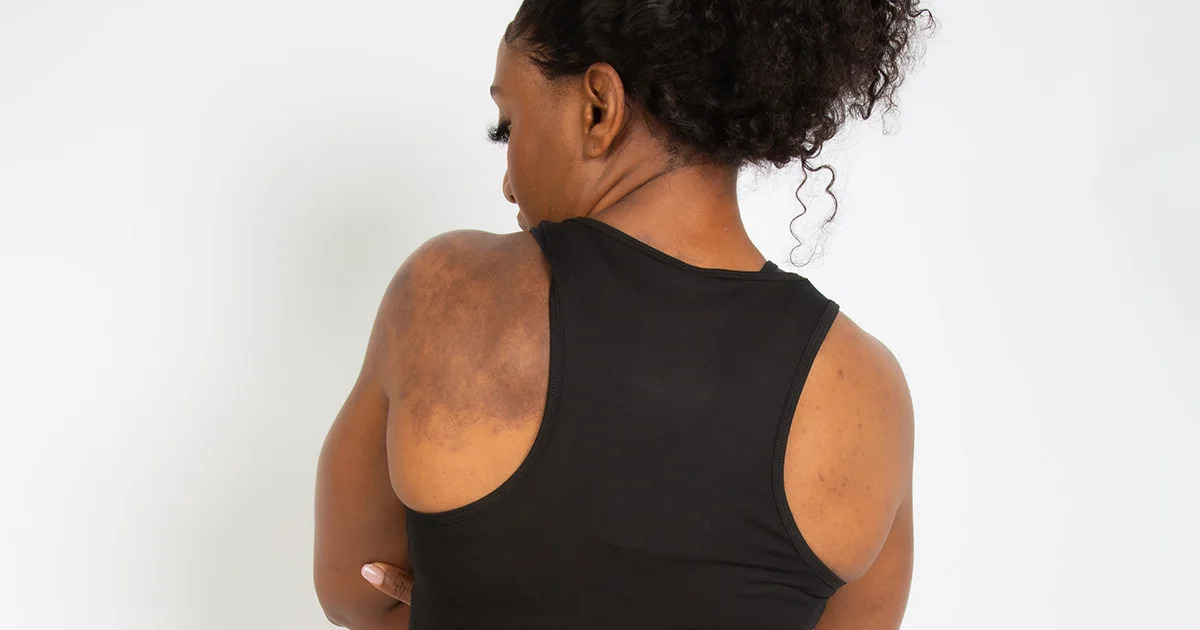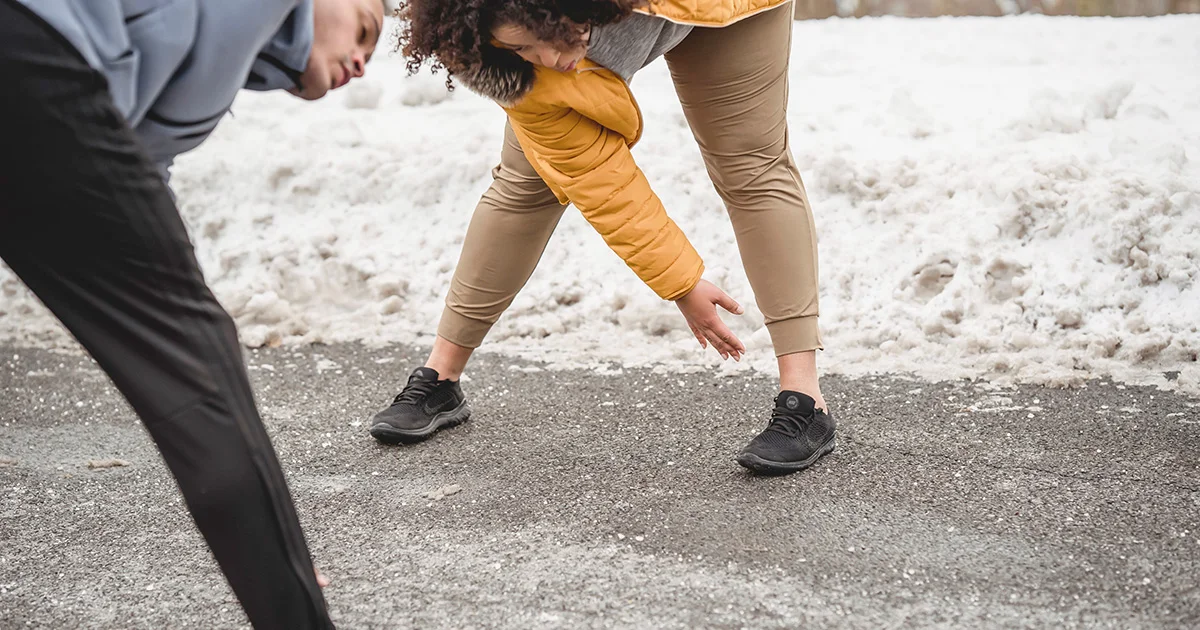Here's what we'll cover
Here's what we'll cover
It's common knowledge that stretching can help you keep your joints and muscles strong, flexible, and healthy. A regular stretching routine might also help improve your posture and decrease pain over time.
But are there other types of stretches besides the basic ones you learned in gym class? Are different stretches better for different kinds of activities?
To answer these questions, let’s take a look at the four most common types of stretching and their benefits.
The benefits of stretching
All human movement depends on the range of motion of our joints. This is the ability of your limbs to go through their complete spectrum of movements. The range of your joints is mostly determined by two parts of your anatomy: your joints and your muscles (Page, 2012).
Joints and muscles can become less flexible and reduce your ability to move the way you want to for many reasons. Bad posture or injuries can cause your muscles to become shorter due to spasms or contractions, limiting your range of motion. This can create a muscle imbalance that causes you discomfort (Page, 2012).
Stretching is a simple activity that can help you (Page, 2012):
Increase your range of motion
Decrease muscle stiffness after exercise
Potentially prevent injuries
Any kind of stretching before exercise can be beneficial. You should customize the type of stretching you choose and your exact routine to your fitness level and the activities you plan to do (Behm, 2016).
What are the different types of stretching?
Just as there are different types of athletic activities, there are different types of stretching. Stretches can be either static (involving no motion) or dynamic (incorporating movement into the stretch).
1. Static stretching
This is the most common type of stretching—you probably practiced this in gym class at some point. Static stretching is where you hold a specific position with a muscle tensed to the point of a stretching sensation. It is often repeated several times in succession (Page, 2012).
Static stretching is good for cooling down after a workout to reduce muscle fatigue and soreness. With your healthcare provider’s supervision, relaxed, static stretching can also help relieve spasms in muscles that are healing after an injury.
A typical example of a static stretch is when you bend over and touch your toes.
2. Active stretching
Active stretching is a type of dynamic stretching that involves moving a limb through its full range of motion, but not past that. The exercise is repeated several times (Page, 2012).
Active stretches take you gently to the limits of your range of motion with no bouncing or jerking movement. They can be helpful as a warm-up for an aerobic workout.
You can try actively stretching your hamstrings by lying on your back on the floor and lifting your leg straight into the air until you feel your hamstring stretch, then repeating this motion.
3. PNF stretching
Proprioceptive neuromuscular facilitation or PNF stretching is a technique that incorporates both static stretches and isometric contractions (contracting a particular muscle without moving it). It's generally considered highly effective, although there aren’t many studies looking at the results (Behm, 2016).
PNF stretching may be very effective for increasing flexibility and range of motion, but it isn’t appropriate for everyone. Many of the PNF techniques require a partner to do them safely. There is also a high potential for muscle or joint injury if the stretches are done incorrectly (Behm, 2016).
The most straightforward PNF stretch is the hold-relax. This is where you stretch the target muscle group and hold it for a few seconds. Then you contract that same stretched muscle without moving it. Hold the stretch and the contraction for 10–15 seconds, then relax your muscle. When you repeat the sequence, you should be able to stretch further than before.
4. Ballistic stretching
Ballistic stretching is a dynamic technique where you extend your joint as far as you can to lengthen the targeted muscle. Then, instead of stopping there as you would with a regular stretch, you add in a “bouncing” or a “pulsing” motion while in the stretched position. The momentum of your body pushes your joint to go further than it normally would (Konrad, 2014).
An example is the ballistic hamstring stretch. In this exercise, you fold forward from a standing position and try to touch your toes. When you are as close as you can get, begin to pulse up and down to see if you can get closer to your toes.
While once a common advanced stretching technique, sports medicine specialists typically no longer recommend ballistic stretching due to the increased risk of injury (Page, 2012).
Which type of stretching is right for you?
While researchers have long known about the benefits of stretching, there is still some controversy about the best form of stretching for each individual to help them meet their exercise goals (Page, 2012).
Static, ballistic, and PNF stretching exercises have all been shown to increase range of motion and decrease muscle stiffness. When comparing the different types, researchers in one study didn’t find any meaningful difference in the results experienced by participants with these different stretching styles (Konrad, 2017).
They concluded that a single stretching exercise of any type was an appropriate tool to increase flexibility and decrease muscle stiffness. They recommended performing your chosen stretch four times for 30 seconds each time (Konrad, 2017).
In general, dynamic stretches are recommended over static stretching when used for warming up before physical activity. This is because evidence suggests that dynamic stretching might positively affect your immediate physical performance (O'Sullivan, 2009).
When should you stretch?
Just like the type of stretching, researchers also don’t agree on when you should stretch to see the best benefits.
Typical recommendations are to perform dynamic stretches (such as active stretching or PNF stretching) before an activity to get your muscles warmed up and ready to exercise. Static stretches may be better suited for the cool-down period after a workout when they can help loosen your muscles up (O'Sullivan, 2009).
It's important to remember that stretching alone will not prevent all injuries from activities. Some people may develop a false sense of security and engage in activity beyond their fitness level, resulting in serious injury (da Costa, 2008). Be honest with yourself about your fitness level, and don’t push yourself into pain or beyond what you can handle.
Doing stretches with bad form can also cause injuries or aggravate existing injuries. If you have any injuries, you should talk with a physical therapist or exercise professional about developing a stretching routine that won’t cause you further problems (da Costa, 2008).
DISCLAIMER
If you have any medical questions or concerns, please talk to your healthcare provider. The articles on Health Guide are underpinned by peer-reviewed research and information drawn from medical societies and governmental agencies. However, they are not a substitute for professional medical advice, diagnosis, or treatment.
Behm, D. G., Blazevich, A. J., Kay, A. D., & McHugh, M. (2016). Acute effects of muscle stretching on physical performance, range of motion, and injury incidence in healthy active individuals: a systematic review. Applied Physiology, Nutrition, And Metabolism, 41 (1), 1–11. doi: 10.1139/apnm-2015-0235. Retrieved from https://pubmed.ncbi.nlm.nih.gov/26642915/
da Costa, B. R., & Vieira, E. R. (2008). Stretching to reduce work-related musculoskeletal disorders: a systematic review. Journal Of Rehabilitation Medicine, 40 (5), 321–328. doi: 10.2340/16501977-0204. Retrieved from https://pubmed.ncbi.nlm.nih.gov/18461255/
Konrad, A., & Tilp, M. (2014). Effects of ballistic stretching training on the properties of human muscle and tendon structures. Journal of Applied Physiology 117 (1), 29-35. doi: 10.1152/japplphysiol.00195.2014. Retrieved from https://journals.physiology.org/doi/full/10.1152/japplphysiol.00195.2014
Konrad, A., Stafilidis, S., & Tilp, M. (2017). Effects of acute static, ballistic, and PNF stretching exercise on the muscle and tendon tissue properties. Scandinavian Journal of Medicine & Science in Sports; 27 (10): 1070–1080. Retrieved from https://www.ncbi.nlm.nih.gov/pmc/articles/PMC5479471/
O'Sullivan, K., Murray, E., & Sainsbury, D. (2009). The effect of warm-up, static stretching, and dynamic stretching on hamstring flexibility in previously injured subjects. Bmc Musculoskeletal Disorders, 10,
doi: 10.1186/1471-2474-10-37. Retrieved from https://www.ncbi.nlm.nih.gov/pmc/articles/PMC2679703/
Page, P. (2012). Current concepts in muscle stretching for exercise and rehabilitation. International Journal Of Sports Physical Therapy, 7 (1), 109–119. Retrieved from https://www.ncbi.nlm.nih.gov/pmc/articles/PMC3273886/












